New flagship Pinarello Dogma F is lighter, faster… and still comes with rim brakes
New top race bike will be used by Ineos Grenadiers from the Tour de France onwards


Pinarello has unveiled its new flagship race bike, the Dogma F.
The Italian company has bucked the trend by continuing to produce a rim-brake version as well as the disc-brake bike, saying it remains “totally convinced that each cyclist has the right to choose which brakes to use.”
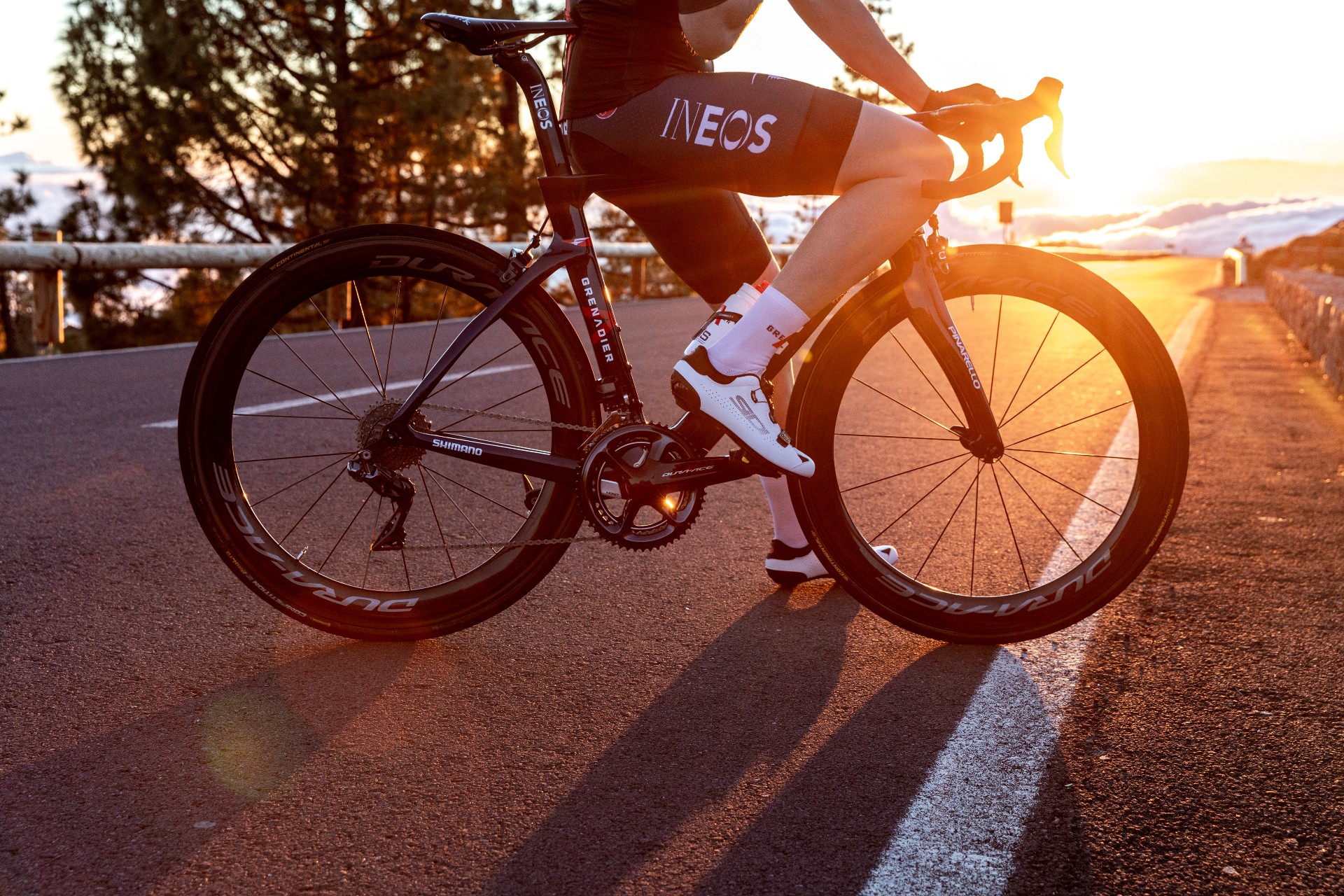
Pinarello confirmed that Ineos Grenadiers would be riding the new rim-brake bike at the Tour de France and until at least the end of the 2021 season, although it expected 80 per cent of customer sales of the new Dogma F to come from the disc-brake bike.
Like the outgoing F12, the Dogma F uses direct-mount rim brakes rather than the single bolt caliper type.
As for its name, the new Dogma had been widely expected to follow the numerical sequence of its predecessors and had already been dubbed ‘F14’ following sightings of Fausto Pinarello riding one at the Giro, but Pinarello has dropped the numbering system. “A Pinarello Dogma is an icon,” says Pinarello’s press release. “It goes beyond a number or superficial classifications. We chose a simple F.”
However, there’s no shortage of numbers to describe the claimed advancements in weight and aerodynamics.
Frame weight the same but ‘frame kit’ 265g lighter
Since Pinarello launched the Dogma F8 in 2014, its target frame weight for the size 53 has been 850 grams and this remains the case for the Dogma F. “This is the weight that we consider correct for our standards of quality and rider safety,” says the brand.
The latest race content, interviews, features, reviews and expert buying guides, direct to your inbox!
“According to our studies and countless field tests, the handling, reliability, and durability of the frame are compromised below this weight. This is why we’re not interested in winning a “weight war.”’
The quoted weights of the Dogma F are even slightly above Pinarello’s stated target weight: 865g for the disc version and 860g for the rim version (both size 53).

The new Dogma F is made from Torayca T1100 carbon with nanoalloy technology, like the F12. It also continues to use a threaded bottom bracket shell rather than press-fit, which although reduces the likelihood of the BB developing the dreaded creak, is not as light.
However, Pinarello says it has reduced the weight of the “frame kit” in which it includes the fork, seatpost, handlebars and bearings and bolts, by 265 grams compared to the Dogma F12.
Although it’s not the element of the frame kit that supplies the biggest weight saving, the saddle clamp is clearly the new part Pinarello is proudest of. Thanks to 3D printing in SLM (selective laser melting) titanium, the new clamp weighs 35g less than the previous one – and it’s really quite an intricate, exquisite-looking thing. Mass-production 3D printing is still rare in the bike industry, which makes it even more impressive.
The seatpost itself is 27g lighter than the old one; the Dogma F’s Onda fork weighs 58g less and the thru-axles of the disc version save 20g.
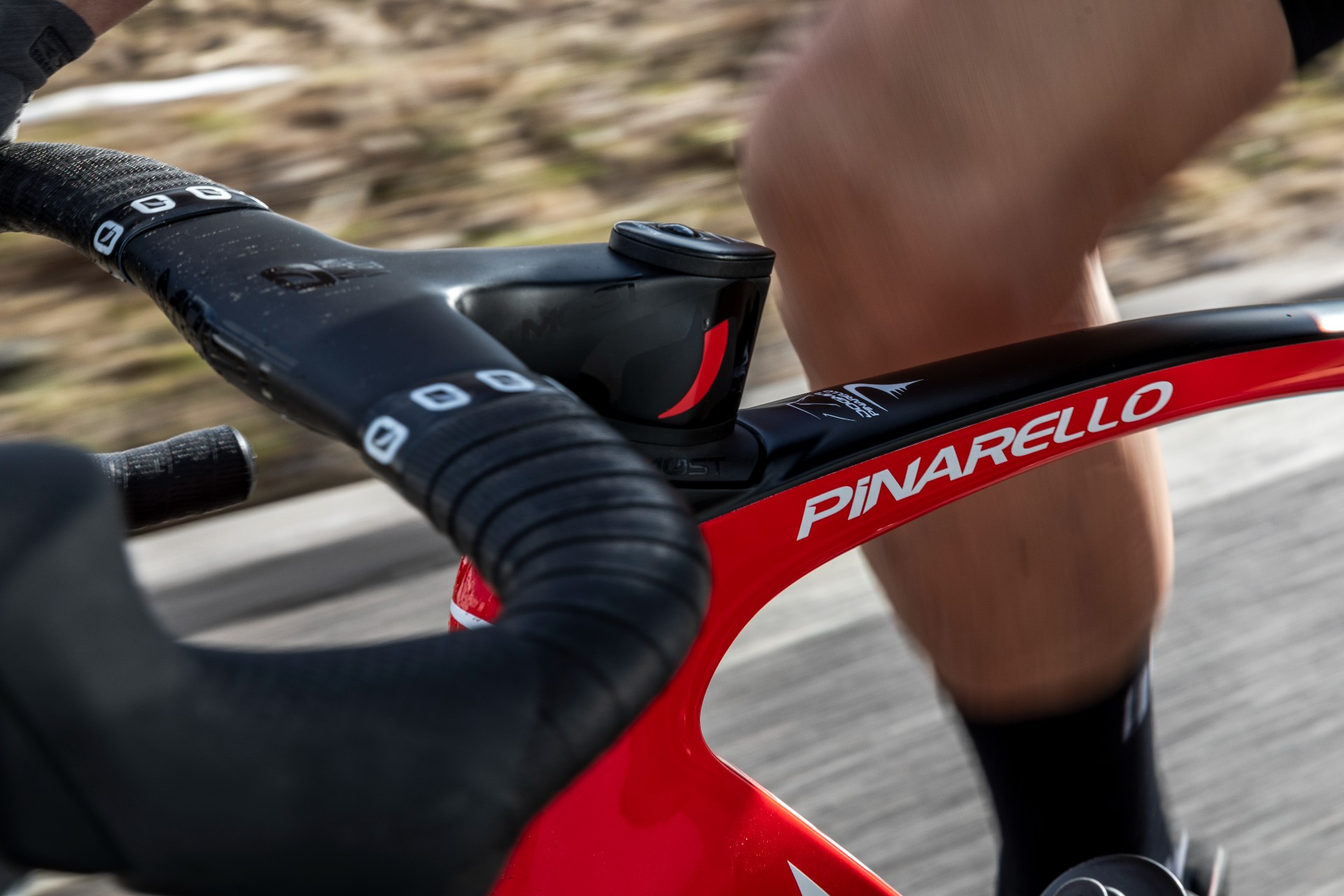
The new MOST Talon Ultrafast integrated handlebar/stem is 40g lighter than the MOST Talon Ultra of the Dogma F12, something Pinarello puts down to a new construction method involving a new layup and the newest generation of carbon-fibre. The brand says the Talon Ultra has “the same stiffness data”.
Fully built, Pinarello quotes the new Dogma F’s weight (disc brake version) as 6.8kg with Shimano Dura-Ace Di2 and DT Swiss ARC 1400 wheels (size 53) or 6.9kg with SRAM Red eTap AXS and the same wheels.
The rim-brake Dogma F will be well below the UCI minimum weight limit of 6.8kg, says Pinarello, and will need to be ballasted to be legal.
Marginal aero gains but disc version faster than rim
The Dogma F12 was a claimed 8W faster than the F10 at 40kph. However, as Pinarello admits, reducing the aerodynamic impact of a frame becomes increasingly difficult with each model.
For the design of the original ‘aero’ Dogma, the F8, the company recruited some impressive firepower in the form of Dimitris Katsanis and Jaguar, so it’s hardly surprising that the aero savings are becoming progressively smaller, but Pinarello’s R&D team have still posted improvements: the rim-brake Dogma F is 3.2 per cent more aerodynamic than the rim-brake F12, while the disc version is 4.8 per cent faster than the outgoing disc F12. This translates to 1.3W at 40kph and 2.6W at 50kph.
As for the Dogma F disc compared to the Dogma F rim, Pinarello says the disc frame and fork is 7.3 per cent faster, the first time a disc Dogma has been faster than its rim counterpart.
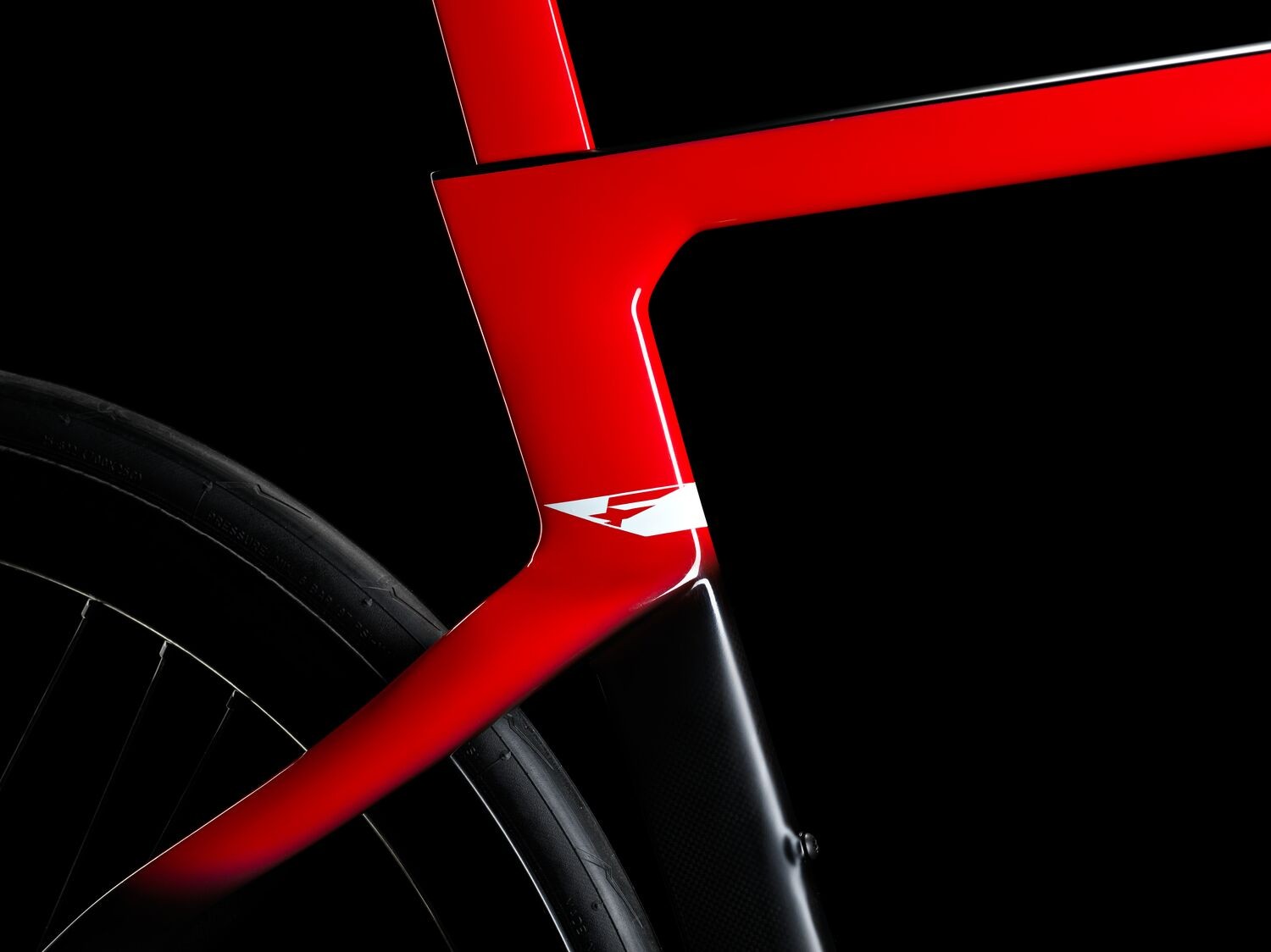
Pinarello achieved the improved aerodynamic performance by taking advantage of the new UCI regulations for 2021 that reduce minimum tube width, and the seat tube and seatpost are narrower, with the seatpost supplying a claimed 30 per cent drag reduction compared to the F12’s.
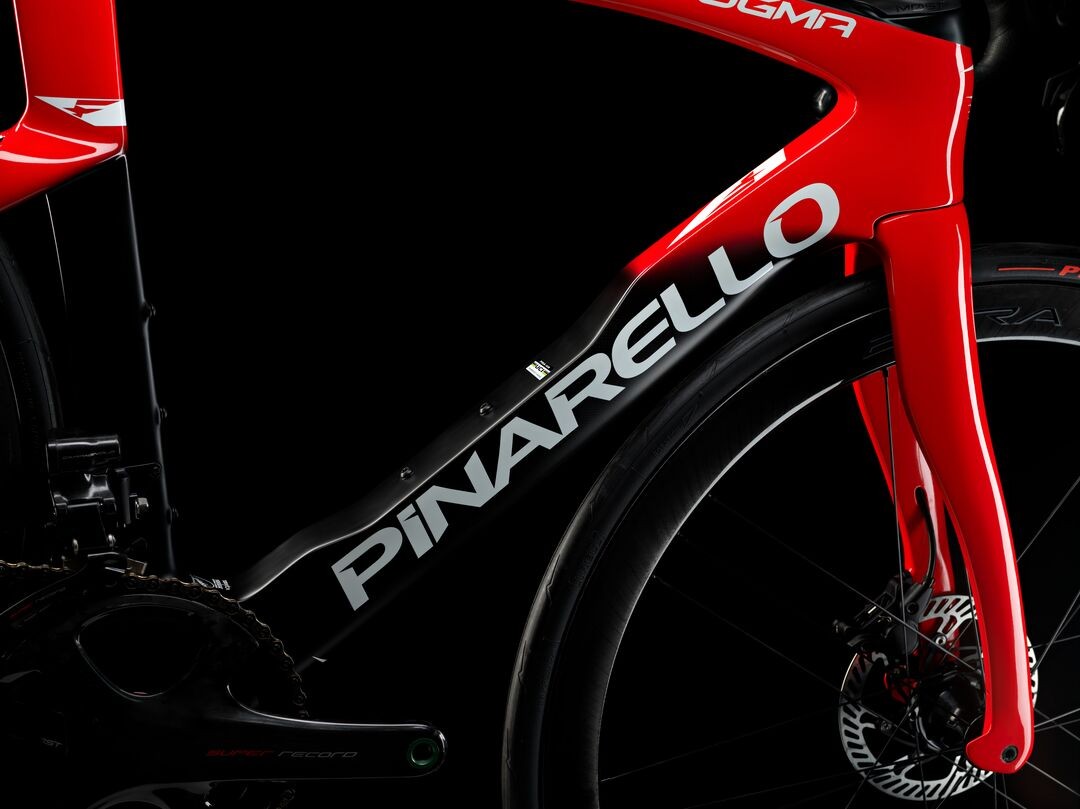
The brand also zoomed in on the down tube, tweaking the airflow step by step, with the result literally a stepped tube designed to channel air from the fork around a wider section around the first bottle cage, which is followed by a new step underneath designed to hide the second bottle cage.
This is a clear progression of the down tube that started with the Dogma F8, which was the first road race bike to take a round bottle into account in its aerodynamic development.
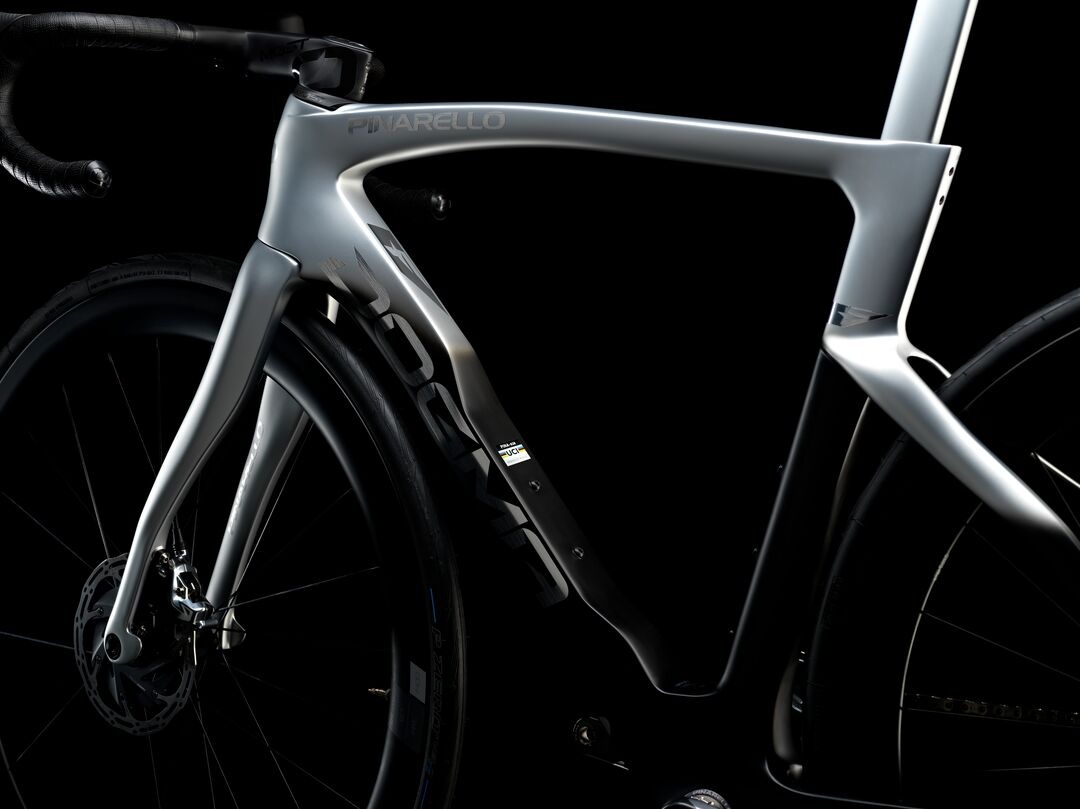
The frame silhouette is still very recognisable as a Dogma, retaining the flatback sections Pinarello introduced with the F8. However the rim and disc versions of the Dogma F vary slightly in the placement of the seatstay/seat tube juncture. The disc version’s seatstays are more ‘dropped’ than the rim version’s and the smaller rear triangle of the disc version ought to be slightly faster, probably helping the disc bike to beat the rim version in the wind tunnel.
However, the Dogma F disc doesn’t stand to benefit from any ability to run bigger tyres: both bikes have clearance for a maximum tyre width of 28mm.
A Dogma for all parcours
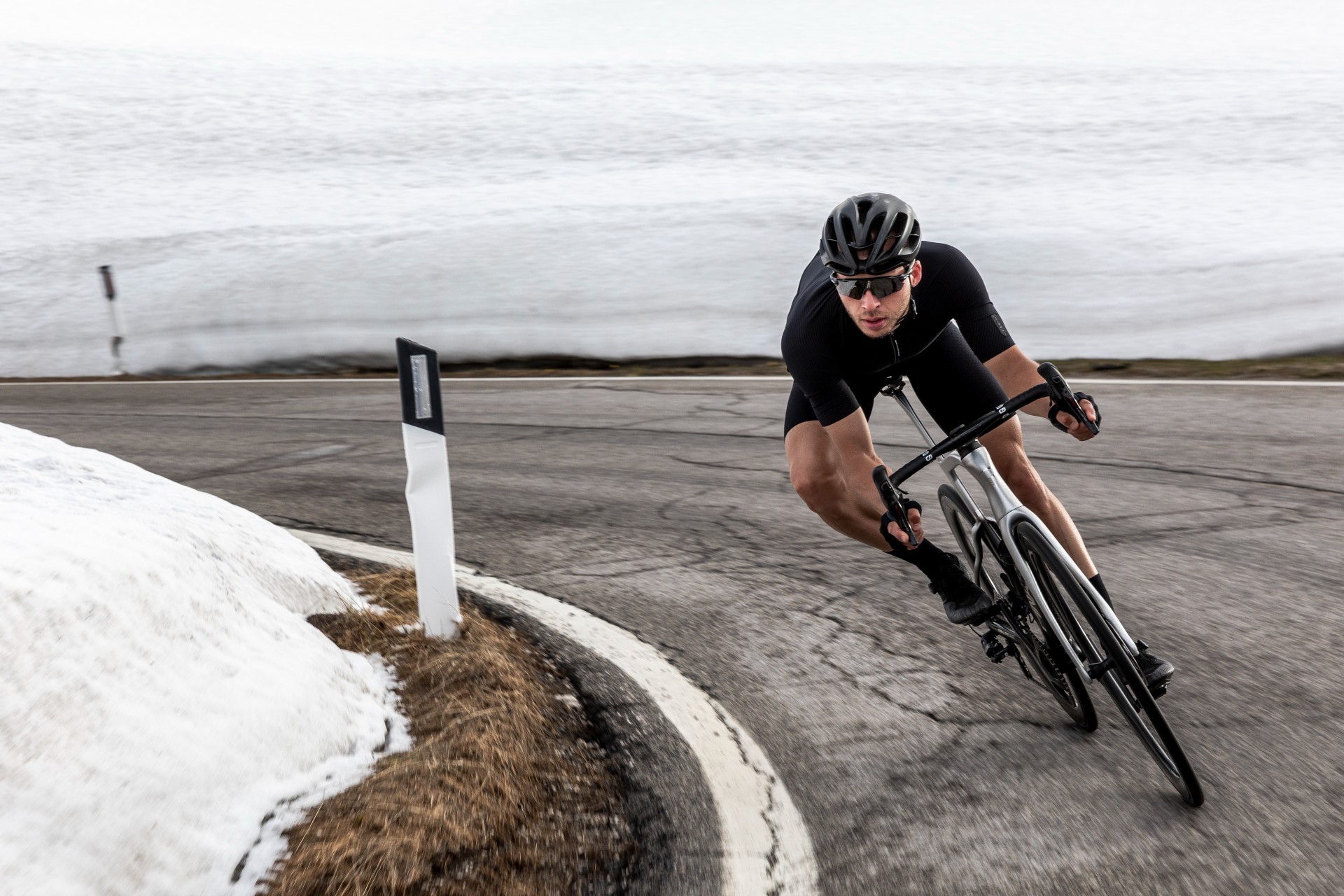
The strapline for Pinarello’s Dogma F marketing campaign is ‘The Art of Balance’. Yes, it’s clearly a catchphrase that at face value doesn’t seem mean all that much, but it’s intended to convey the idea – the fact even – that Pinarello has never thought it necessary to produce separate climbing and aero bikes. The Dogma – even going back beyond the wavy-shaped Dogma 65.1 Think 2 that Bradley Wiggins rode to victory in the 2012 Tour de France – has always been capable of speed on the flat in crosswinds and been light enough in the mountains.
Based on the fact that seven of the last 10 Tours de France have been won on a Dogma you can’t argue with Pinarello’s approach.
New Onda forks for rim and disc brakes
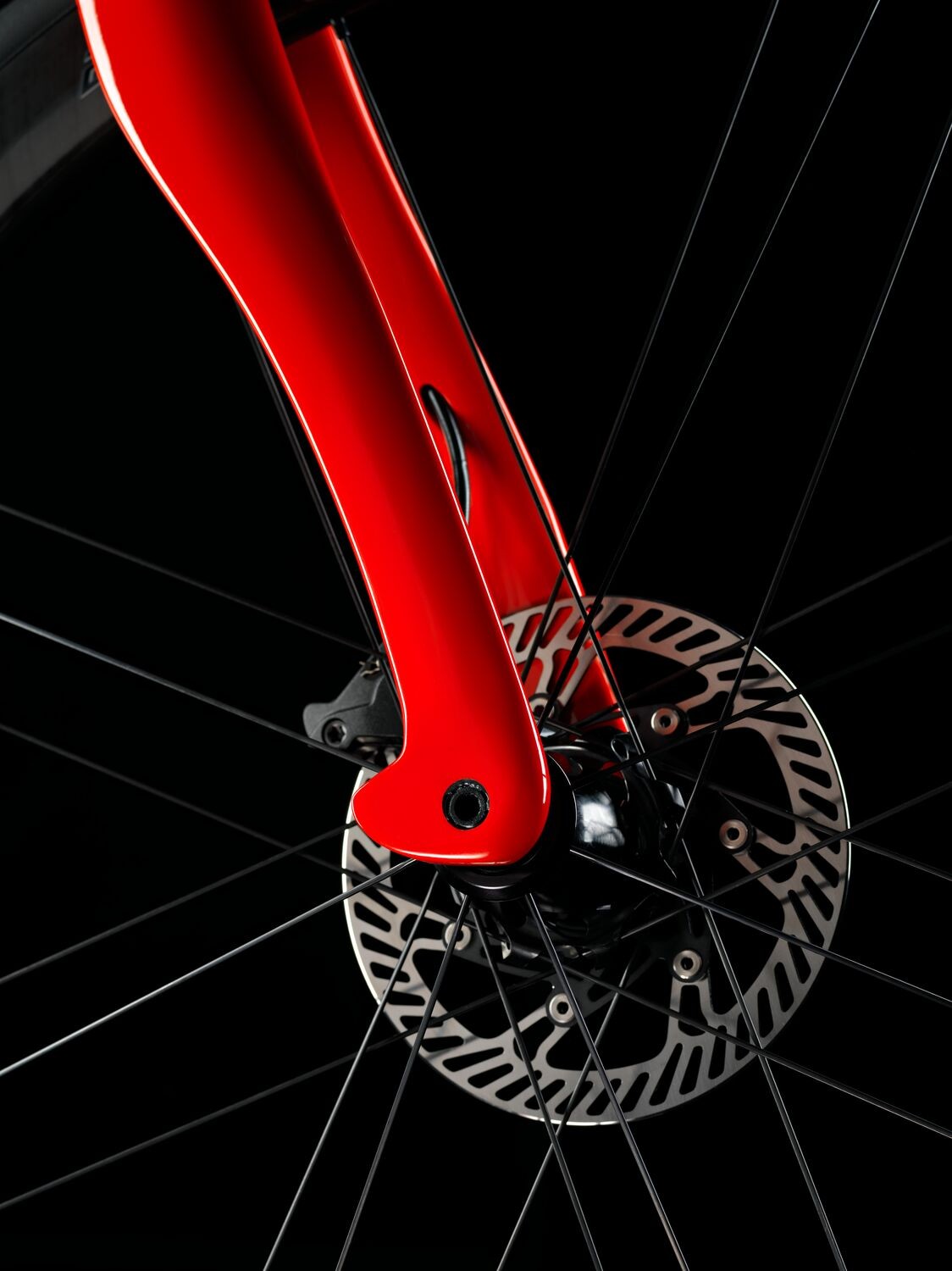
Just as the rim and disc brake frames are essentially different bikes, so are the respective rim and disc forks.
Pinarello says the disc fork makes the most of aerodynamics, with the legs tighter to the tyre at the top. According to Pinarello it is 12 per cent more aerodynamic than the F12 disc fork.
The rim-brake fork has what Pinarello describes as the “famous shark’s mouth profile that first appeared on the F8.”
As before, the latest Onda fork is derived from that of the Bolide, the brand’s TT bike, and Pinarello says it has sections that act like a sail in crosswinds.
What about stiffness and comfort?
The Dogma frame appears to be close to reaching peak aero with just marginal improvements claimed. As for stiffness, Pinarello claims a 12 per cent gain just in the bottom bracket area.
Interestingly, the white paper reveals that due to the narrower seat tube, which has a width of just 20mm at the top junction, the bottom bracket stiffness was reduced by 2.1 per cent. Pinarello says it compensated for this by rotating the seatstays by 15mm, presumably in order to provide a bracing effect.
Other than that, the only mention of stiffness is in the white paper’s ‘summary of improvements’ – a sort of mission statement in which the aim is: “Utilising new materials guaranteeing the same or even improved stiffness, while decreasing the overall weight of the frameset.”
Likewise, Pinarello makes no claims for increased comfort levels, or ‘vertical compliance’ as the industry likes to call it. In the white paper, vertical compliance only gets a mention in the caption of an FEM graph tracking the effect of lowering the seatstays.
Geometry and sizing
The geometry – something Pinarello is famously good at – remains the same as the F12’s, with the only difference on the chart being that stack and reach are now calculated to take account of the 9mm integrated headset top cap.
There are 11 sizes from 430 up to 620. That’s a huge number of sizes compared to most top race bikes but it’s down from 13 sizes of the F12. Pinarello has taken an average of the two smallest sizes and deleted the size 470.
However, along with 16 handlebar sizes and two seatpost sizes, Pinarello says there are a total of 352 fit combinations.
"We will never use T shirt sizes to measure our bikes, say Pinarello. "To do so would be an insult to our Italian tradition, to the craftsmen who would measure a rider for a bike the way a tailor would measure someone for a suit."
As you’d expect, the various sizes are engineered for different heights, weights and power outputs. Filippo Ganna, at 193cm and 83kg needs a very different bike from Tom Pidcock at 170cm and 58kg, says Pinarello, and it’s not just a matter of shortening the tubes.
All Dogma Fs will still be painted in Italy at Pinarello’s headquarters in Villorba, with what Pinarello calls “customisation possibilities allowing cyclists to create truly unique pieces of art.
Pricing and availability
The Pinarello Dogma F will be available from a range of 20 launch retailers in the UK, including Pinarello's London and Manchester stores. Complete bike builds in three launch colour ways will be available from September 2021, while framesets will be available from December 2021. Custom MyWay orders begin from January 2022. Pricing is as follows:
£5,400 RRP: Frameset (rim & disc)
£11,000 RRP: Dogma F Dura-Ace Di2 | MOST Ultrafast 40 carbon wheelset
£12,000 RRP: Dogma F SRAM RED eTap | DT Swiss ARC 50 carbon wheelset
We say...
The new Pinarello Dogma F represents an evolution rather than a revolution. As the winningest bike in the pro peloton it makes total sense for Pinarello to merely tweak the frame, taking advantage of UCI rule changes and more modern technology, to make it a tiny bit more aerodynamic and a couple of hundred grams lighter as a frameset.
Against a frame that is still very recognisably a Dogma, those new parts that save weight from the ‘frame kit’ really stand out, especially the titanium 3D printed saddle clamp and the lighter Talon Ultrafast bar.
We also applaud Pinarello’s decision to make a rim-brake version, even though it expects the vast majority of Dogma sales to come from the disc version.
And we think it looks gorgeous.
Simon Smythe is a hugely experienced cycling tech writer, who has been writing for Cycling Weekly since 2003. Until recently he was our senior tech writer. In his cycling career Simon has mostly focused on time trialling with a national medal, a few open wins and his club's 30-mile record in his palmares. These days he spends most of his time testing road bikes, or on a tandem doing the school run with his younger son.
